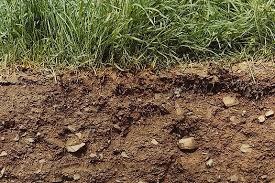Way before trees or lichens evolved, soils on Earth were alive, as revealed by a close examination of microfossils in the desert, reports a team of researchers according to Science daily.
These tiny fossils require a microscope to see and probably represent whole organisms. The 3,000 million-year-old rocks have long been thought to be of marine origin. However, “a closer look at the dusty salt minerals of the rocks suggests they had to have experienced evaporation on land,” said paleontologist Gregory Retallack, lead author on a study.
Other mineral and chemical tracers found in the rocks also required weathering in soils of the distant geological past, he said.
“Life was not only present but thriving in soils of the early Earth about two thirds of the way back to its formation from the solar nebula,” Retallack said. The origin of the solar system — and Earth — occurred some 4.6 billion years ago.
The study outlines a microbiome of at least five different kinds of microfossils recognized from their size, shape and isotopic compositions. The largest and most distinctive microfossils are spindle-shaped hollow structures of mold-like actinobacteria, still a mainly terrestrial group of decomposers that are responsible for the characteristic earthy smell of garden soil.
Other sphere-shaped fossils are similar to purple sulfur bacteria, which photosynthesize organic compounds in the absence of oxygen while leaving abundant sulfate minerals in the soil.
“With cell densities of over 1,000 per square millimeter and a diversity of producers and consumers, these microfossils represent a functioning terrestrial ecosystem, not just a few stray cells,” said Retallack, a professor. “They are evidence that life in soils was critical to the cycles of carbon, phosphorus, sulfur and nitrogen very early in the history of the planet.”
The new discoveries by the team are potentially controversial because many scientists have long pointed to stromatolites, a life form that emerged 3.7 billion years ago, and other marine life as evidence of life that evolved in the sea and found their way into intertidal rock formations.
Retallack wrote: “For several billion years, the whole of the Earth’s land surface was completely barren. Even after life had richly populated the oceans, there is no clear evidence for any life on land.”
“The newly recognized microfossils may have supplied some evidence at last,” Retallack said.
The ancient soils with sulfate salts and microfossils. They are superficially similar to those found recently by the Mars rover Curiosity. “They may,” he said, “be useful as guides for the discovery of life on other planets.”
Critical to the new discoveries were advanced imaging and analyses performed with the cluster of instruments.
N.H.Kh

